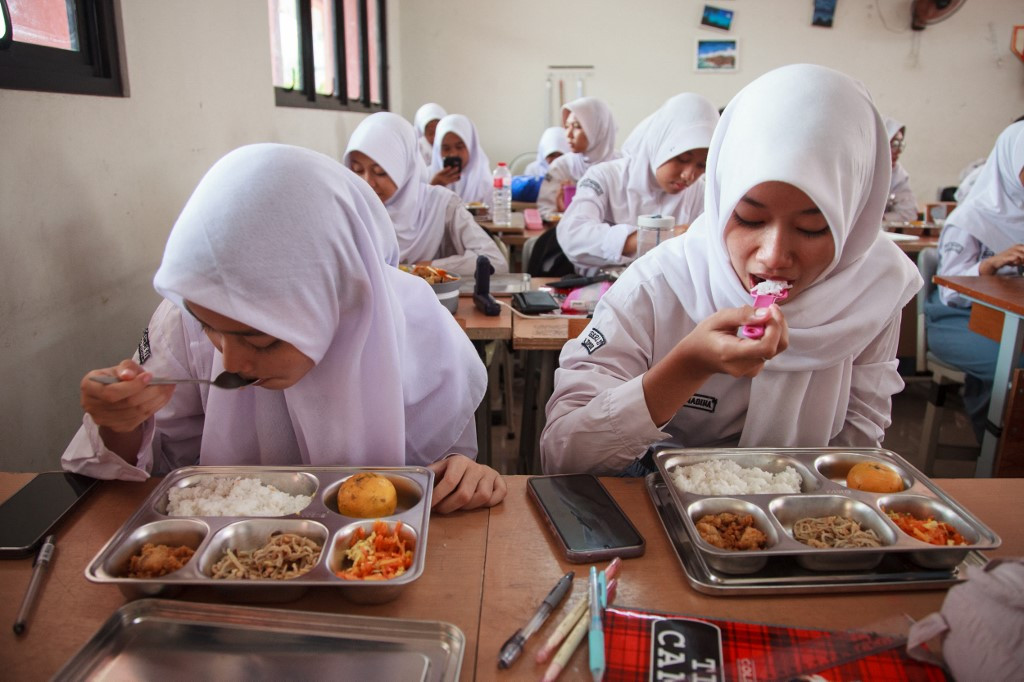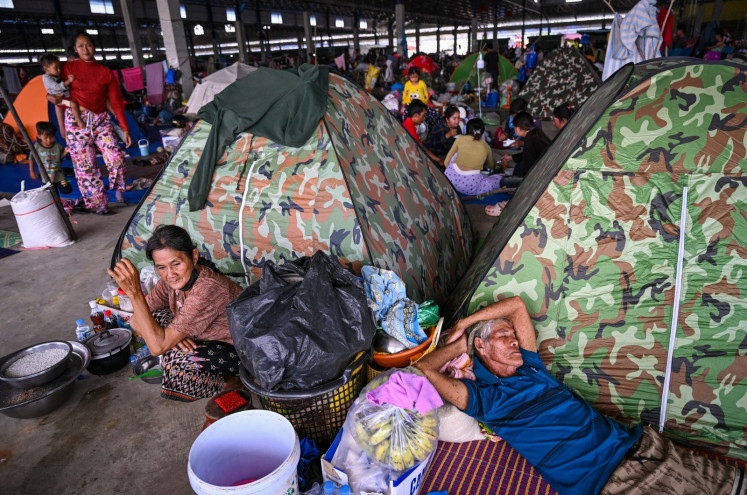Popular Reads
Top Results
Can't find what you're looking for?
View all search resultsPopular Reads
Top Results
Can't find what you're looking for?
View all search resultsFree nutritious meals: Let children grow and dream big
The free meals program has the potential to reduce poverty rates by between 1 percent and 4 percent.
Change text size
Gift Premium Articles
to Anyone
I
n January 2025, the United States experienced an extreme winter. The streets of New York were covered in thick snow and the temperature plunged to -15 degrees Celsius. Even US President Donald Trump's inauguration ceremony in Washington, DC, which was originally planned to be held outdoors, was eventually moved indoors.
Amid these extreme conditions, I was sitting with a mother in a corner of New York City. She was upset that her child's school remained open despite the worsening weather.
However, her anger turned to confusion when she understood the school's reasoning. The reason was simple. If the school was closed, many students would go hungry.
In American public schools, free lunch is not just a service, but a basic need for millions of children. She was stunned, feeling guilty for not initially realizing the social inequality that existed nearby.
I was also pensive. In a country that is often considered a symbol of global prosperity, free meals have been a savior for its citizens.
This phenomenon is not only happening in the US. Based on data from the Global Child Nutrition Foundation, school meal programs have been implemented in 125 developed and developing countries like Sweden, the Philippines and India.
The schemes are also diverse. Some are universal (for all students), such as those implemented in India, Brazil, Iran and Malaysia. There are also targeted schemes (i.e. only for certain groups) or subsidies.
Sweden is a pioneer. Since the 1960s, the government has been providing free school meals, long enough for researchers to assess its effects over the long term. The results have been remarkable.
The study, published in the Review of Economic Studies (2021) showed that children who received free school meals had up to 6 percent higher incomes as adults. This reinforces the idea that nutrition is not just about a full stomach, but also an investment in the future.
There have been many empirical studies that prove the positive impacts of free meal programs. A literature review by Raveendranathan et al. (BMJ Open, 2023) analyzed 31 different studies, which showed that midday meals in India significantly improved students’ academic achievements.
Free school meals also positively influence household spending patterns. Michele Marcus and Katherine Yewell wrote in the Journal of Health Economics in 2022 that free meals could reduce household spending on food by up to 19 percent, creating new consumption space beyond basic needs.
Then, what about Indonesia?
Let's simulate. Take a family of four with a total expenditure of Rp 2 million (US$126) per month, which is just a little below the poverty line of Rp 595,000/person/month according to Statistics Indonesia (BPS). If the two children receive free meals worth Rp 10,000 per portion, then in a month this family receives benefits worth Rp 400,000.
Their per capita consumption increases to Rp 600,000 (Rp 2.4 million divided by four people), slightly above the poverty line. This means that free meals can help vulnerable families get out of poverty.
Moreover, BPS records in-kind transfers, including free meals, as part of consumption. Assuming the coverage of the free meals program is projected for approximately 80 million children, the simulation shows that this mechanism has the potential to reduce poverty rates by between 1 percent and 4 percent.
It is no wonder that public support for this program is very high. A survey conducted by Indikator Politik Indonesia in January found that 87.1 percent of respondents supported the program, consisting of 69.4 percent who agreed and 17.7 percent who strongly agreed. This contrasts with the loud voices of rejection on social media and some academics.
This is the common thread. Social media is often dominated by the upper middle class, who is digitally savvy but economically does not represent the majority. The Pew Research Center calls this phenomenon an echo chamber.
When I posted on social media data about how expenditures above Rp 14 million are included in the 5 percent richest group in Indonesia, many responded with skepticism.
Likewise, when we talk in the digital space about the free meals value being Rp 10,000 per portion, the assumption arises that it is inhumane. As a matter of fact, according to the National Socioeconomic Survey (Susenas), 80 percent of Indonesian households only spend less than that amount for one portion of daily food. This is not the price of a restaurant meal in a Jakarta shopping mall, but the cost per portion in a public kitchen that is operated on a large scale.
Indeed, free meals are not without their challenges. Risks such as food safety issues, complicated governance and potential corruption are real problems. But are these challenges a reason to give up?
No. This is precisely where the role of the state is needed: To prove that the flow of public funds can reach the wider community, not just the elite few.
The free meals program is not just about providing free lunches. It is about equal opportunity. About how the state is present at the children's dining table. About the hope that schools are not just places to learn, but also places where every child, regardless of background, can grow up healthy and dream big.
***
The writer is a professor of economics at Padjadjaran University, Bandung, and a member of the National Economic Council. The views expressed are personal.











